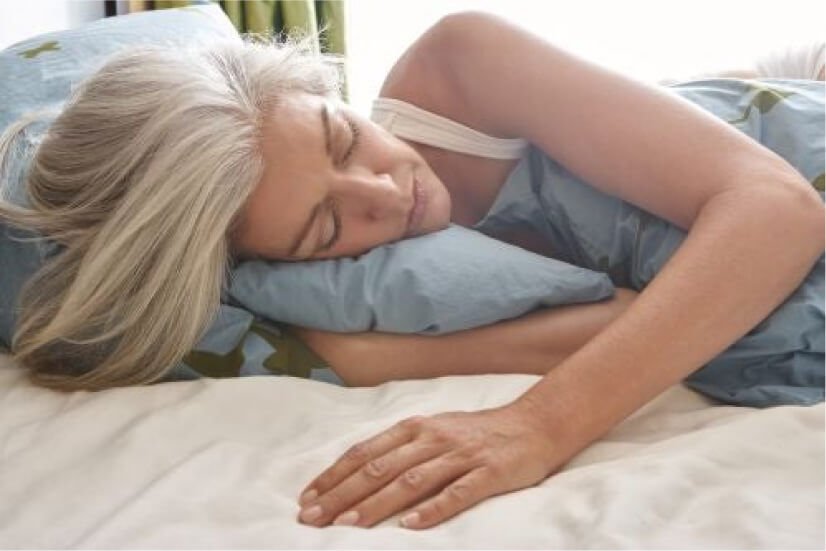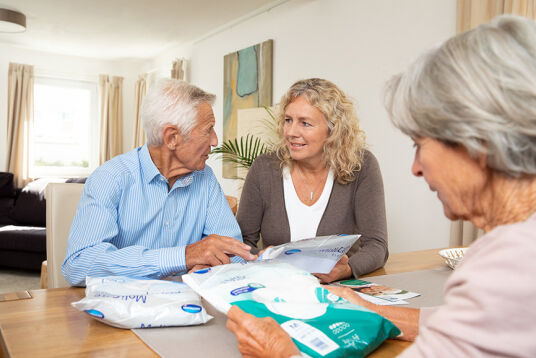Incontinence
Nocturnal Enuresis – how to manage night-time bedwetting
by Molicare March 15, 2022

Wetting the bed at night is something people normally associate with children. But nocturnal enuresis, as it is also known, is more common in adults than you may think. Studies reveal that 2% of adults1 experience nocturnal enuresis. And due to stigma still surrounding the condition, researchers believe the problem is underreported and the true figure is higher.
What is nocturnal enuresis?
According to the International Continence Society (ICS)2, urinary incontinence is defined as involuntary leakage of urine during the day. But for involuntary leakage at night while asleep, experts have a different term: nocturnal enuresis.
Bedwetting does not only occur in children and adolescents; many adult women and men have also experienced uncontrolled emptying of the bladder during sleep. That doesn’t mean that everyone who has ever “wet the bed” is regarded as incontinent. Occasional, uncontrolled urination during sleep is not a cause for concern. But nocturnal enuresis is regarded as a medical condition when it happens regularly. The formal diagnosis criteria for people aged 5 and over is if it occurs twice a month for a minimum of three months3,4.
What are the causes?
The reasons for nocturnal enuresis range from hormonal and physical to medication and lifestyle.
Possible causes include:
The production of antidiuretic hormone (ADH) is inhibited
While asleep, your body generates the antidiuretic hormone ADH, which sends the signal to the kidneys to slow urine production. Wetting the bed can happen when ADH is not produced in sufficient quantities to send that message5. Causes for inhibited ADH include Type I and Type II diabetes.
Overactive bladder
An overactive bladder is characterised by an excessive urge to urinate, which is difficult to suppress. While many affected people can control this urge during the day, at night they are unable to control it consciously, resulting in involuntary urine leakage6.
Genetic predisposition
Genetic factors also play a role. Many bedwetters have a family history of bedwetting. Close relatives or the parents of the affected person often show similar symptoms7.
Sleep disorders
Bedwetters are often "deep sleepers". Reduced irritability or awareness of the need to urinate during very deep sleep can lead to uncontrolled emptying of the bladder8.
Excessive alcohol consumption
Drinking too much alcohol can also put people into a deep sleep, where they could be unaware of the urge to urinate that would otherwise have woken them up. Alcohol is also a diuretic, increasing urine production.
Mental stress
Mental wellbeing can be a cause. Increased stress, anxiety and trauma can all result in nocturnal enuresis9,10.
Underlying medical conditions
Underlying conditions that can lead to nocturnal enuresis include:
- Urinary stones
- Obstructive sleep apnoea
- Anatomical abnormalities
- Urinary tract infections (UTI)
- Having an enlarged prostate
Diagnosis
The first step in treatment is identifying the cause of the nocturnal enuresis.
- A specialist begins with a medical history. Possible psychological causes are also investigated.
- There is a physical examination, testing of urine samples for UTIs and potentially an ultrasound.
- Urine flow is measured to see the amount of urine released per second, and to determine how much urine may remain in the bladder after attempting to void.
- It’s also common practice for the physician to ask you to keep a fluid diary to monitor fluid intake and urination.
Treatment
Treatment options for nocturnal enuresis include:
- Bladder training: going to the toilet at set times through the day, training the bladder to hold more fluid.
- Exercises to strengthen the pelvic floor muscles.
- Sacral nerve stimulation to help control and overactive bladder. A small device placed in the body sends signals to nerves in the lower back that help control urine flow.
Which incontinence products are best for night-time?
There are incontinence products that can give you a peaceful and dry night's sleep. Ensure you choose a product with the following important features:
A secure fit
Lying down in bed, urine is no longer directed by gravity down into the product’s absorbent core. So, at night it’s even more important that your incontinence product provides a secure fit. That means excellent leakage protection, such as rapid absorption and a two-part cuff system to prevent leaks at the sides.
Skin protection
As it will be next to your skin all night, it should also be made of soft materials to avoid irritation. And with a skin-neutral pH value of 5.5 to protect the natural acid mantle of the skin.
Wear time
During the daytime, you can change the incontinence product at any time, but to get a good sleep you need a product able to provide protection right through the night. That means a product with the ability to absorb potentially several instances of bedwetting without leaking and keeping the skin dry.
With a range of treatment options and high-quality incontinence products to choose from, nothing needs to stand in the way of a dry, comfortable, good night’s sleep.
MoliCare® Premium Mobile 10 drops Day & Night Protection
MoliCare® Premium Mobile 10 drops Day & Night Protection new pull-up pants offer extended wear time, providing up to 12 hours protection against leaks thanks to a triple-layer absorbent core, advanced quick dry system and two-part anti-leakage cuffs. Body-shaped and made from soft materials, they combine optimum comfort with a secure fit. They also deliver active skin protection by helping to maintain a skin-friendly pH level of 5.5 for maximum skin compatibility.
You can find out how to use MoliCare® Premium Mobile here.
References
2 The standardisation of terminology in lower urinary tract function: report from the standardisation sub-committee of the International Continence Society, Abrams et al., 2003:, page 39 https://www.goldjournal.net/article/S0090-4295(02)02243-4/fulltext
3 The wet child Becker T Journal of Urology and Urogynecology 2006; 13 (special issue 5) (issue for Austria), page 7-10 https://www.kup.at/kup/pdf/6087.pdf
4 https://www.special-harninkontinenz.de/kinder/
5 J. P. Guignard et al: Endocrine theory of idiopathic nocturnal enuresis. In: Arch Pediatr. 1997, 4 Suppl 1, p. 3s-6s https://pubmed.ncbi.nlm.nih.gov/9181001/
6 https://www.netdoktor.de/symptome/enuresis/
7 https://d-nb.info/977156338/34
8 Paul A. Palmisano, MD, Enuresis: Causes, Cures and Cautions, West J Med. 1976 Nov; 125(5): 347-.349. https://www.ncbi.nlm.nih.gov/pmc/articles/PMC1237345/?page=2


